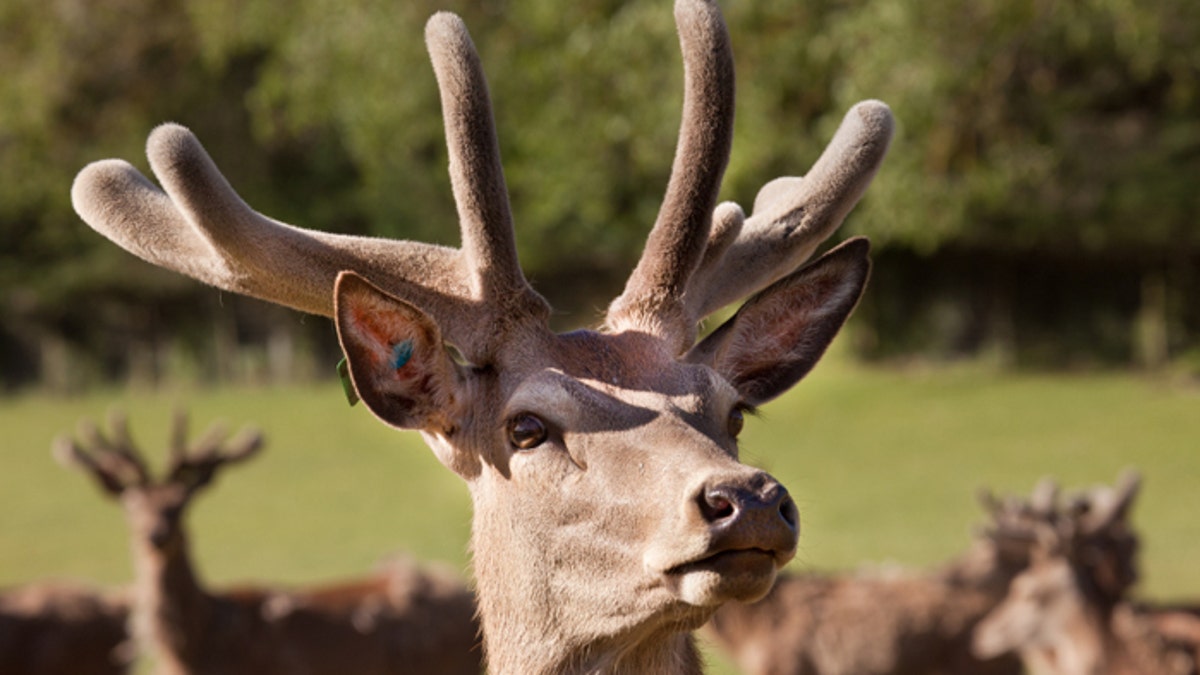
Leading up to this year’s Super Bowl, sports newscasters covered a minor drama concerning Baltimore Ravens linebacker Ray Lewis and deer antler velvet. Did the star linebacker use deer antler velvet spray to help repair torn triceps? The flap is due to the fact that deer antler velvet is purportedly rich in IGF-1 (insulin growth factor 1), which is a sports-enhancing substance banned by both the World Anti-Doping Agency and Major League Baseball. Lewis denied the allegation that he had used the substance, and since he never failed a drug test, the Super Bowl went on as planned.
A favored medicine in the ancient Traditional Chinese Medicine (TCM) system, deer antler velvet is a type of cartilaginous tissue found in early-growth antlers. It isn’t the velvet that covers young antlers, but the tissue found inside the antlers prior to calcification – when antlers become very hard. The first mention of antler velvet used as a health aid was found written on a scroll in a tomb in Hunan province, China. The scroll is believed to be about 2000 years old. In TCM, deer antler velvet is considered a first-class tonic that imbues the user with energy, stamina and greater overall vitality. The health-enhancing qualities of this medicine are believed to be due to its concentration of hormones.
According to marketers of deer antler velvet, this is a miracle medicine, “proven” to increase muscle mass and strength, decrease body fat, increase endurance, reduce recovery time, improve circulation, reduce joint pain and inflammation, beautify skin, enhance brain function, bolster immunity, and improve kidney and liver function. Well, who wouldn’t want all of that?
There is, however, a fly in this beatific ointment. Most of the claims made for deer antler velvet are not supported by science of any kind. In at least one study, administration of deer antler velvet improved the weight and bone strength of osteoporotic rats. In mice, antler velvet demonstrated anti-infective activity and improved immune function. What does this mean? It means that if your rats have osteoporosis or if your mice have an infection, supplementation with deer antler velvet may help.
In human studies, the story is different. In a trial using female rowers, supplementation with deer antler velvet did not improve rowing performance and did not alter hormone levels. In active males, deer antler velvet did not enhance strength, did not change the composition of blood and did not enhance endurance.
Tests on the composition of deer antlers during various phases of growth showed that IGF-1 does in fact increase in antlers during the velvet phase, and it is likely that IGF-1 plays a role in stimulating antler growth. Further studies show receptors for another growth agent, IGF-11. Deer antler velvet does contain growth factors, but the amount of these substances varies according to what the deer are fed, their age at the time the antlers were harvested and other factors. Due to this variability, the concentration of enhancing factors is inconsistent and unknown.
Because deer antler velvet enjoys such a long history of high status as a tonic, it may well impart vitality-enhancing benefits. But we have yet to see any good science corroborating the lavish claims for this product made by marketers who are currently riding a post-Super Bowl sales bonanza of deer antler velvet. For now, deer antler velvet remains a traditional remedy with scant science. There’s no reason to imagine that taking deer antler velvet would cause any harm, but it is unlikely to live up to all the current hype.
Chris Kilham is a medicine hunter who researches natural remedies all over the world, from the Amazon to Siberia. He teaches ethnobotany at the University of Massachusetts Amherst, where he is Explorer In Residence. Chris advises herbal, cosmetic and pharmaceutical companies and is a regular guest on radio and TV programs worldwide. His field research is largely sponsored by Naturex of Avignon, France. Read more at MedicineHunter.com.




















